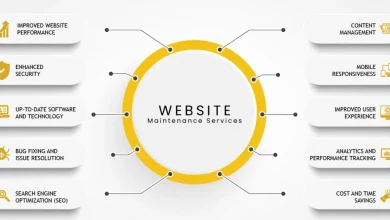Understanding PR Event Meaning: Essential Insights for Effective Planning

Planning an event and making it successful is no easy feat. Public relations, or PR, plays a big role in getting the word out and making sure everything runs smoothly. It’s not just about sending out a press release; it’s about crafting a strategy that connects with your audience and gets them excited about what you have to offer. From setting goals to analyzing results, understanding the meaning behind PR events is crucial for effective planning. Let’s dive into some key insights that can help you make your next event a hit.
Key Takeaways
- PR is essential in event planning to boost visibility and engagement.
- Crafting a clear PR strategy helps target the right audience and communicate your message.
- Evaluating PR success involves setting measurable goals and analyzing outcomes.
The Role of PR in Event Planning
Defining PR Event Meaning
Public relations, or PR, in the context of events, is about getting the word out and shaping how people perceive the event. It’s not just about sending out press releases; it’s about crafting a narrative that resonates with your audience. You want your event to stand out, right? That’s where PR comes in. It helps in creating a buzz, making sure your event is on everyone’s calendar.
Importance of PR in Event Success
PR can make or break your event. It’s that simple. When done right, PR can:
- Boost attendance by reaching the right audience.
- Enhance the event’s reputation, making it more appealing.
- Provide valuable feedback and insights from attendees and media.
But if you get it wrong, you might end up with empty seats and a tarnished reputation.
Integrating PR with Event Marketing
Now, let’s talk about how PR and marketing go hand in hand. Integrating PR with your event marketing strategy can amplify your reach. Think of PR as the storyteller and marketing as the promoter. Together, they can:
- Create consistent messaging across all platforms.
- Maximize coverage through various channels like social media, blogs, and traditional press.
- Build lasting relationships with media and influencers.
Incorporating PR into your event planning isn’t just an option; it’s a necessity. With the right approach, you can ensure your event is not just another date on the calendar but an experience people look forward to.
Crafting a Compelling PR Strategy
Identifying Target Audiences
Understanding your target audience is the first step in crafting a compelling PR strategy. You need to know who you’re talking to before you decide what to say. Start by gathering data about your potential audience. Look at demographics, interests, and even their online behavior. Once you have this info, segment your audience into groups with similar characteristics. This way, you can tailor your messages to fit each group, making your strategy more effective.
Developing Key Messages
Once you know your audience, you can start developing key messages. These messages should align with your overall business goals and resonate with the people you’re trying to reach. Think of key messages as the backbone of your PR strategy. They should be clear, concise, and consistent across all platforms. It’s important to ensure these messages reinforce your brand’s values and connect emotionally with your audience.
Utilizing Media Channels Effectively
Finally, it’s time to think about how you’ll get your message out there. Choose the media channels that best reach your target audience. This could be anything from traditional media like newspapers and TV to digital platforms like social media and blogs. Using a mix of channels can help you reach a broader audience. Don’t forget to monitor and measure your efforts to see what’s working and what’s not, so you can tweak your strategy as needed. For instance, platforms like PRNEWS.IO offer tools to help plan and select the right publications, ensuring your message gets the attention it deserves.
Maximizing Media Coverage for Events

Building a Media List
Creating a robust media list is like setting the groundwork for your event’s success. Start by researching publications that align with your event’s theme. Identify key journalists and editors who cover similar events or topics. Here’s a quick checklist to guide you:
- Publication Name: Know where your story fits.
- Relevant Section: Is it lifestyle, tech, or business?
- Contact Information: Emails, phone numbers, Twitter handles—whatever gets you in touch.
- Focus Area: Tailor your pitch to match their interests.
Organize all this info in a spreadsheet. Leave space to track your outreach progress.
Creating Engaging Press Releases
A press release is your event’s first impression. Make it count! Start with a catchy headline that grabs attention. Then, dive into the details:
- Who, What, When, Where, Why: Cover the basics upfront.
- Quotes: Add a personal touch with quotes from key figures.
- Call to Action: Encourage journalists to cover your event or reach out for more info.
Remember, your press release should not read like an ad. Keep it newsworthy and engaging.
Leveraging Social Media for PR
Social media is your megaphone. Use it wisely to amplify your event’s message. Here are some strategies:
- Create an Event Hashtag: Make it catchy and easy to remember.
- Engage with Followers: Respond to comments and questions promptly.
- Use Visuals: Pictures and videos can tell your story better than words.
Plan your social media posts in advance to maintain a consistent message. Engage with your audience before, during, and after the event to keep the momentum going.
Evaluating PR Success in Events

Setting Measurable Goals
Before you can measure success, you’ve got to know what you’re aiming for. Setting clear objectives is crucial. Think of goals that are specific, measurable, achievable, relevant, and time-bound (SMART). For example, do you want to boost attendance by 20% compared to last year? Or maybe you’re aiming for a certain number of media mentions? Whatever it is, be clear about it from the start. This makes it easier to track progress and see if you’re hitting the mark.
Analyzing PR Metrics
Once your event wraps up, it’s time to dive into the numbers. You’ll want to look at key performance indicators (KPIs) to get a sense of how well your PR efforts worked. Here are a few metrics to consider:
- Reach: How many people were exposed to your message?
- Engagement: Did people interact with your content? Look at likes, shares, comments, and any other forms of engagement.
- Impressions: How often did your content get displayed?
- Sentiment Analysis: What was the general vibe or feeling from your audience about your event?
- Income: If your event was tied to revenue, check if the financial goals were met.
Adapting Strategies for Improvement
After you’ve gone through the metrics, it’s time to think about what worked and what didn’t. This is where you can really learn and improve for future events. Maybe you noticed that a particular social media platform drove most of your engagement. Or perhaps a certain type of content didn’t resonate as well as you hoped. Use these insights to tweak your strategy for next time.
Remember, evaluating success isn’t just about numbers—it’s about learning and growing. By consistently analyzing and adapting, you’ll be better equipped to handle your next event. Plus, you’ll likely save some money by choosing a convenient location and being flexible with dates, which can help you stick to your budget without compromising on quality.
When it comes to measuring how well your public relations (PR) efforts worked during events, it’s important to look at a few key factors. Start by checking how many people attended and how they felt about the event. You can also see if your social media buzz increased and if your website got more visitors. These signs can help you understand if your PR strategies were effective. For more tips and insights on improving your PR game, visit our website!
Conclusion
So, there you have it. Planning a PR event isn’t just about getting the word out; it’s about crafting a story that people want to hear. It’s like throwing a party where everyone feels invited and excited to be there. You need to know your audience, get your timing right, and make sure your message is clear and catchy. Don’t forget to keep track of what works and what doesn’t, because that’s how you get better each time. Whether you’re a newbie or a seasoned pro, remember that PR is all about connection and communication. Keep it real, keep it engaging, and most importantly, keep it fun. That’s the secret sauce to a successful PR event.




